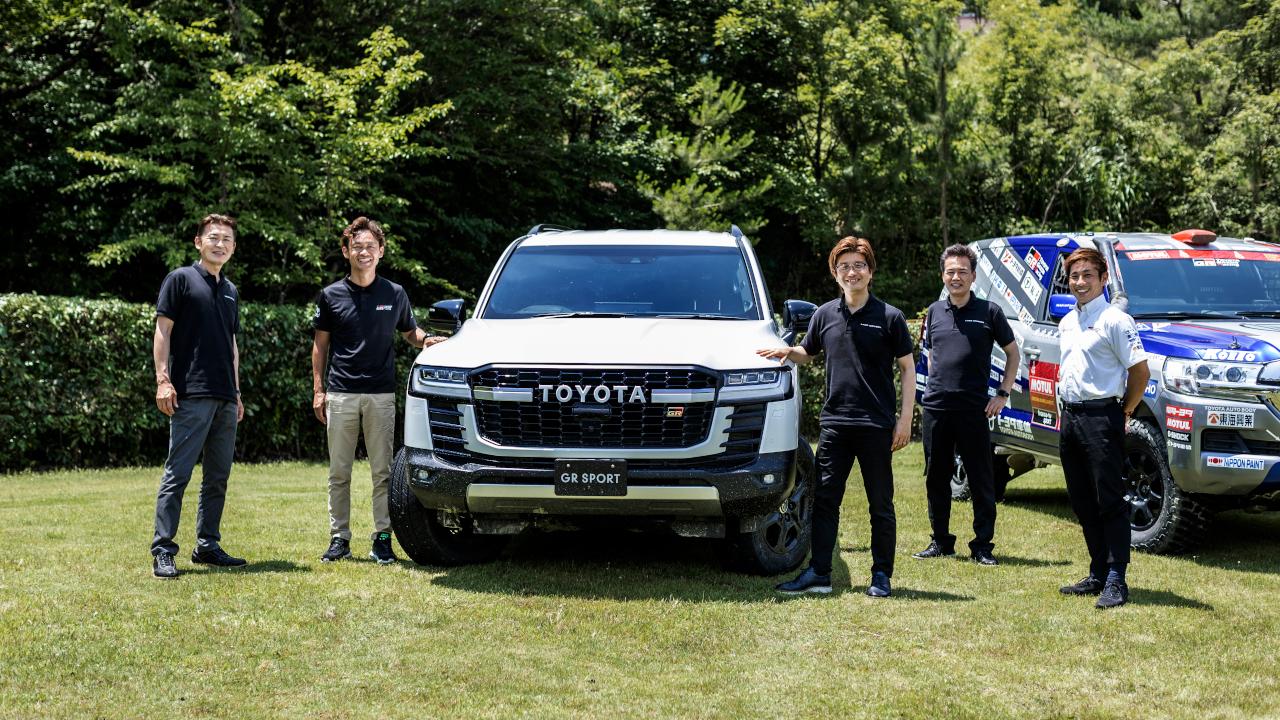
The test drivers and chief engineer of the new Land Cruiser talk about their development challenges to evolve the Land Cruiser 300 Series while ensuring its unwavering concept of "go anywhere & everywhere and come back alive & safe".

What the Land Cruiser means to its developers
Drivers rely on the Land Cruiser to “go anywhere & everywhere and come back alive & safe”, in any environment around the world. So what can they expect from the new-generation Land Cruiser, developed to comfortably handle even the harshest roads? Juichi Wakisaka posed the question to the car’s chief engineer, Takami Yokoo, and the test drivers who refined its driving experience.
Wakisaka had been a big Land Cruiser fan even before stepping into the world of racing, having driven two 80 Series models followed by a 100 Series. He asked Kazuyuki Ueno, a test driver whose involvement with the vehicle dates back more than 20 years to the 100 Series, to explain the essence of the Land Cruiser.
Ueno
Turning 70 this year, the Land Cruiser has a long history – the model name has been around longer than any other at Toyota. I personally drive a Land Cruiser as well. The car is loved by customers around the world, and I think the way it has connected with people, those intangible assets, are a key part of the vehicle.

The Land Cruiser’s development team has pursued the car’s core values of reliability, durability, and drivability on rough terrain, paying close attention to the voice of users around the world.
In the 300 Series development, Wakisaka was curious about the involvement of Akihiro Osaka, who had been engaged in improving on-road performance as an Advanced Technical Skills Institute test driver since Wakisaka himself had first joined TOYOTA GAZOO Racing's Nürburgring 24-hour endurance race project. What role had Osaka played?
Osaka
If Morizo is the owner-chef, then my part in the development of Toyota’s various models is to ensure that each one delivers the taste that he seeks. The Land Cruiser felt like a car that had already earned the trust of customers around the world through the diverse ways it had been used.
My role was to bring something extra to the Land Cruiser’s core of reliability, durability, and drivability on rough terrain – to achieve even greater comfort and ease of use.

Despite his “advanced skills”, Osaka’s experience as chiefly an on-road test driver made him somewhat nervous about working on the development of the Land Cruiser. He continued.
Osaka
The Land Cruiser development team is very open-minded, with a history of welcoming staff from somewhat different backgrounds, such as us. I think it comes from the desire to create a better Land Cruiser.
Akira Miura, however, had driven the Land Cruiser in slightly different circumstances than development or vehicle evaluation – the motorsports arena, namely the Dakar Rally. He put it very simply.
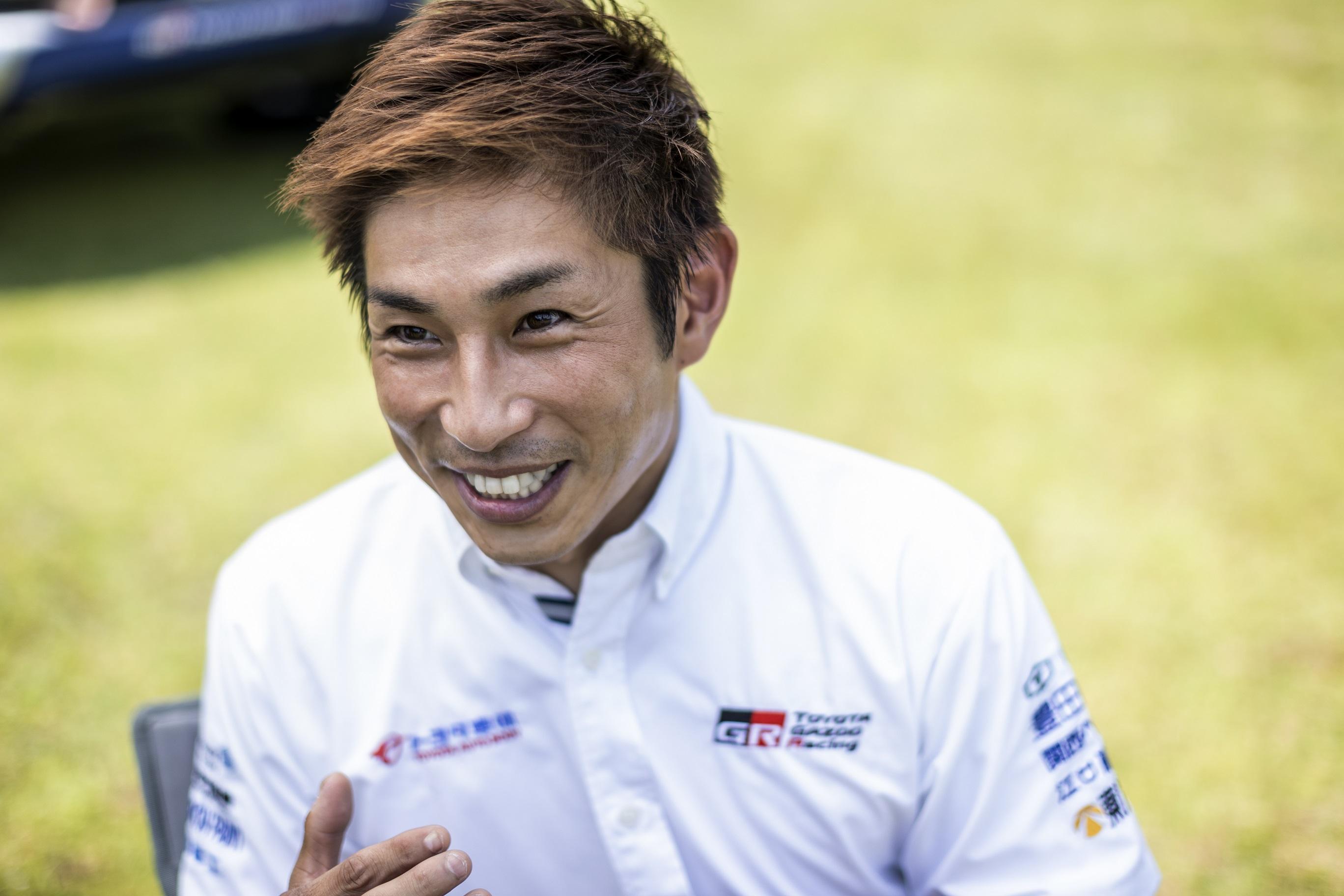
Miura
The Land Cruiser is a car that makes the impossible possible. I love motorsports, but to begin with, I was not a professional driver. This car has enabled people like me to tackle the grueling Dakar race, to the point where we can now post competitive times. I can tell you from personal experience that this car makes the impossible possible.
In the early stages of development, chief engineer Yokoo consulted Miura to work out the basic design, starting with the base grade. The creation of the GR Sport grade came later.
“Ease of driving” marks greatest advance from the 200 Series
As previously described, even the veteran racing driver Wakisaka could not hide his surprise at the striking difference in driving between the 200 Series and 300 Series, after taking both Land Cruisers through the Sanage Adventure Field’s off-road course. Wakisaka tried to gauge the impressions of Miura, who also got his first off-road run in the 300 Series that day.
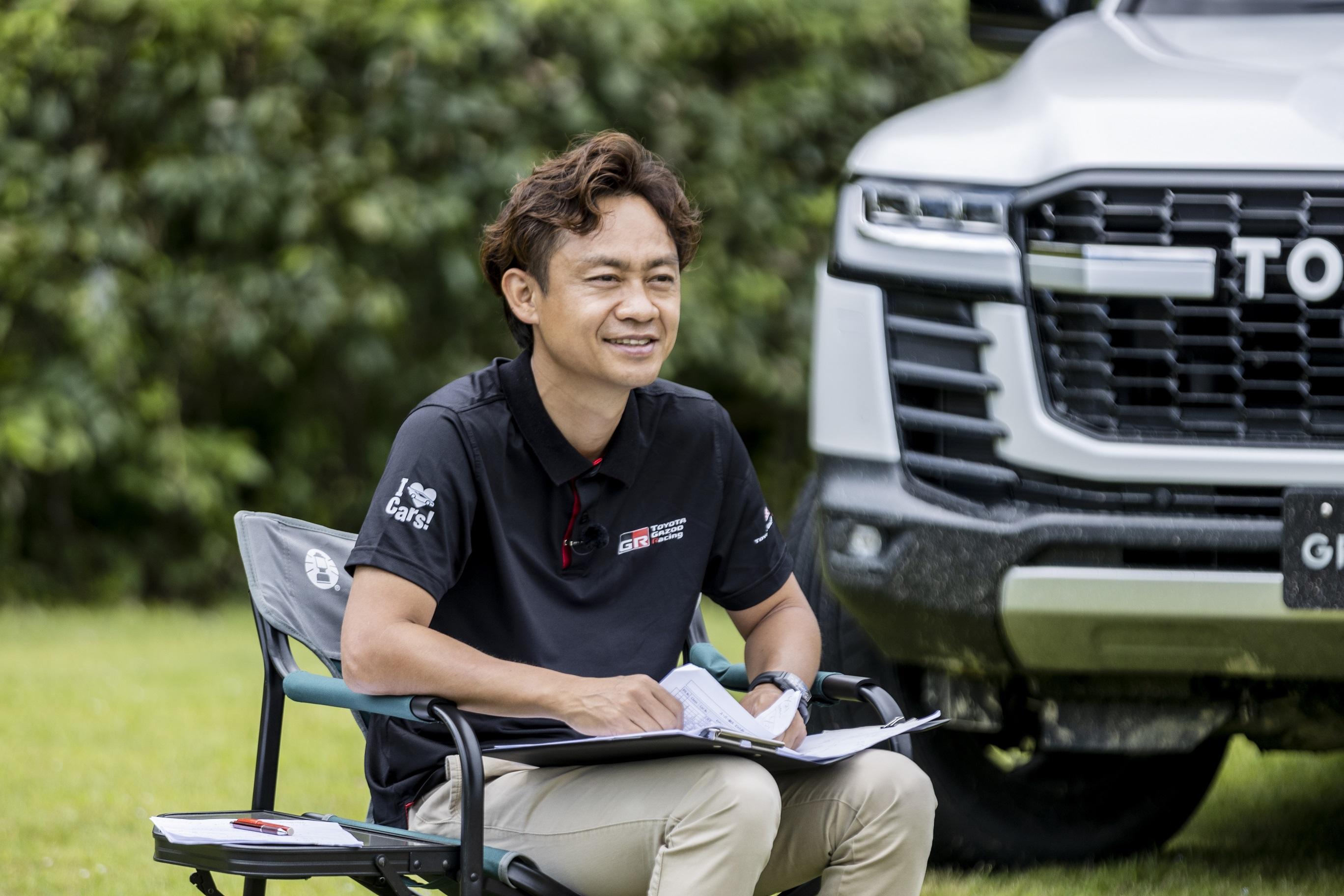
Wakisaka
That test drive earlier, that was quite a surprise, wasn’t it? This may not mean much coming from an amateur off-roader such as myself, but I felt like it was of another level.
Miura
Indeed. When you take such a large car off-road, you have to expect some serious shaking. This jolts the body as well, so the driver has to brace themselves with their arms and legs. Inside the 300 Series, however, even off-road the shaking was so gentle that it almost felt like an anticlimax.
On top of that, the driving position is also more natural than in the 200 Series, so it feels like driving a sports car. When driving off-road, you can operate the car naturally in constantly changing environments and surface conditions.
In that sense, I found it easy to drive. It made me realize that, until now, I had unconsciously written off this aspect as an inevitable part of designing the Land Cruiser for durability and performance on rough terrains.

Wakisaka
Let me put it this way – there’s a good mismatch between the view through the front window and the movement of the vehicle. From inside the car, even big gaps feel like you’re clearing tiny potholes. But when you see it from the outside, the suspension is at full stroke to maintain contact with the road.
The 300 Series also has more power steering assist, which makes the steering lighter, but manages to retain feedback from the road and a natural feel when driving. It achieves a high-level balance between seemingly conflicting requirements. What development approach made this possible?
Yokoo
I think many factors contributed, but in my mind the biggest was the fact that, for the first time, we were able to establish a new TNGA (Toyota New Global Architecture) platform for a ladder-frame vehicle.
We started with a driving position that allows easy operation in a natural posture, then lowered the center of gravity as much as possible to ensure the vehicle body moves smoothly.
In past models, the shock absorbers were slightly out of alignment with tire movement when stroking, and we were able to optimize this for the 300 Series by bending the frame a little. Revamping the frame made many things possible.
Osaka
Since the introduction of TNGA, C&N (Confident and Natural) has been a key concept in vehicle production. In other words, the driver should naturally be able to feel safe and worry-free.
Morizo sees this idea as the unwavering core of our development. I think this concept overlays neatly with the “reliability” that has been passed down through the many generations of Land Cruiser.
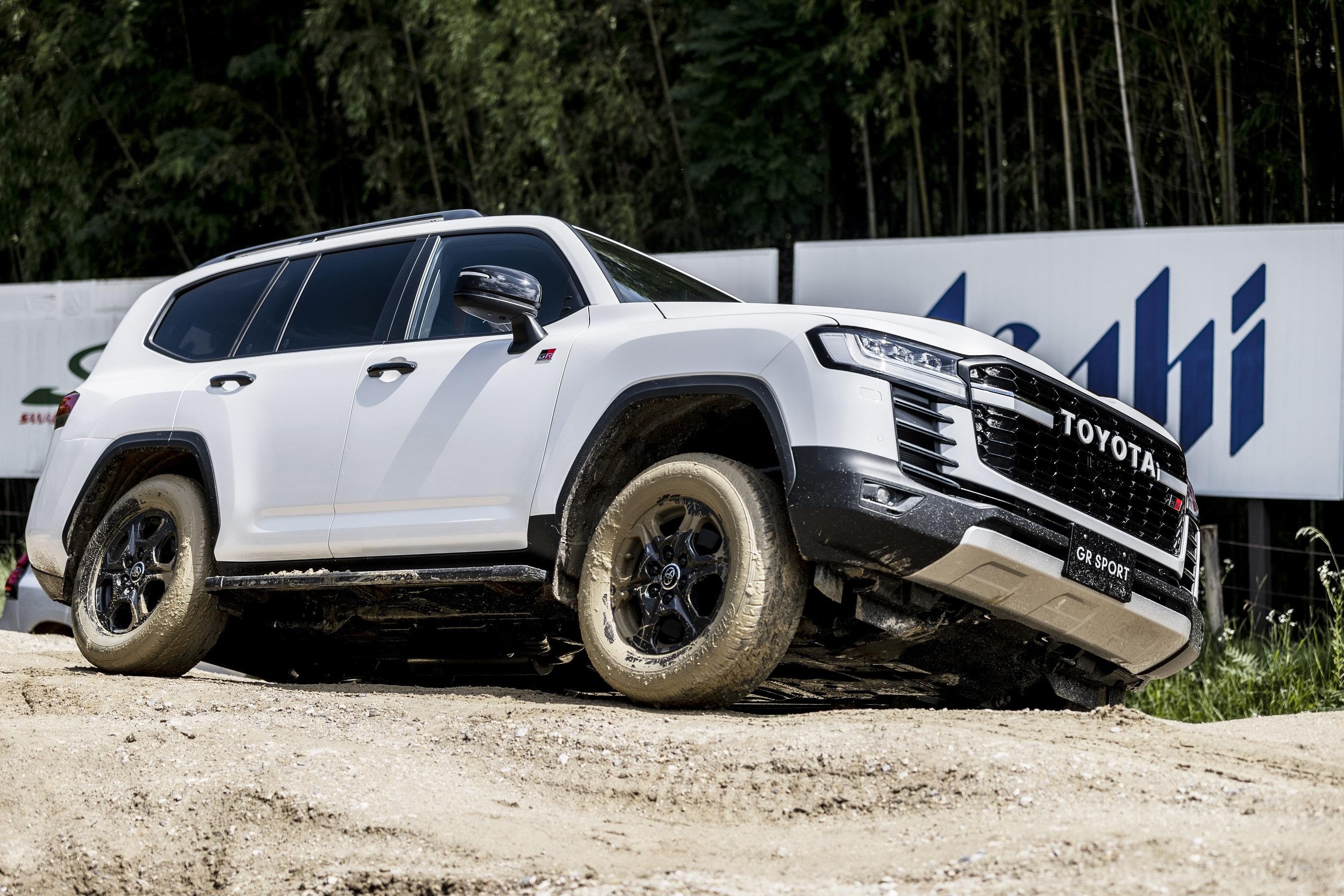
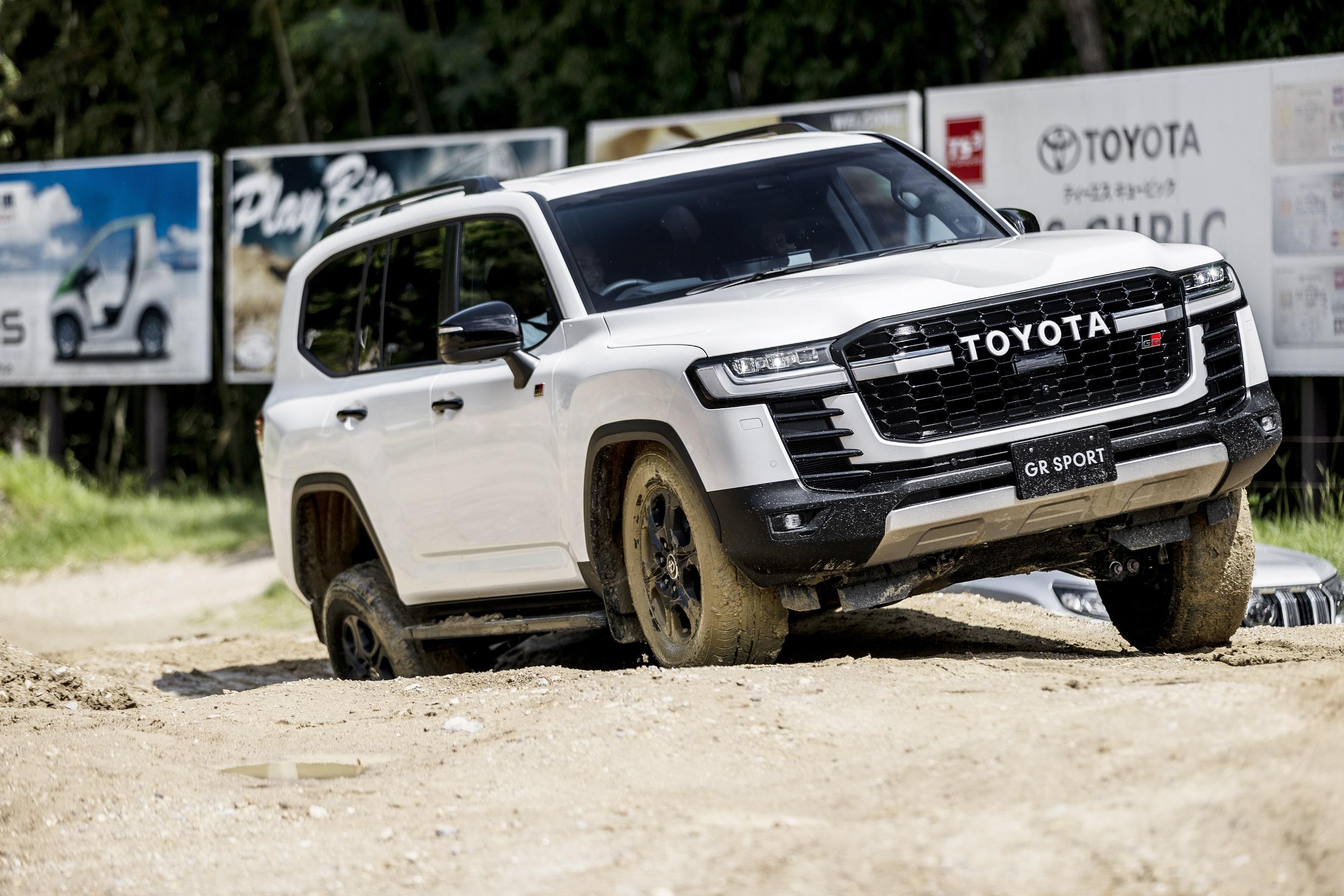
Ueno, who had refined the car’s off-road feel, added the following.
Ueno
The ‘ease of driving’ marks the greatest advance from the 200 Series to the 300 Series. As with past models, we’ve tried to make the car as long-lasting as possible. But this time, I think the added C&N perspective brought by Osaka’s team allowed us to reach the point where it’s obvious from the moment you get behind the wheel.
On top of that, with new technology we’ve been able to accomplish things that were previously beyond us, such as the steering actuator and the mounting position of the rear suspension on the ladder frame. That’s another big factor.
“Making ever-better cars” by training people on the toughest roads. This common thread seems to run through both TOYOTA GAZOO Racing’s practice of utilizing feedback from motorsports, including the Nürburgring 24-hour race, and the Land Cruiser’s development approach, which involves listening to the voice of customers in order to protect their lives on the world’s harsh terrains.
When Wakisaka pointed this out, the two drivers involved in off-road and on-road development tests answered as one.
Ueno
I do think there is a common thread. With the Land Cruiser, we have always sought to create better cars by listening to the voices of customers and reflecting on breakdown conditions that we were unable to anticipate.
In the case of the Land Cruiser, we learn from the customer, but just like the Nürburgring 24-hour race, our cars are forged in harsh environments, and those experiences live on in the way our cars drive.
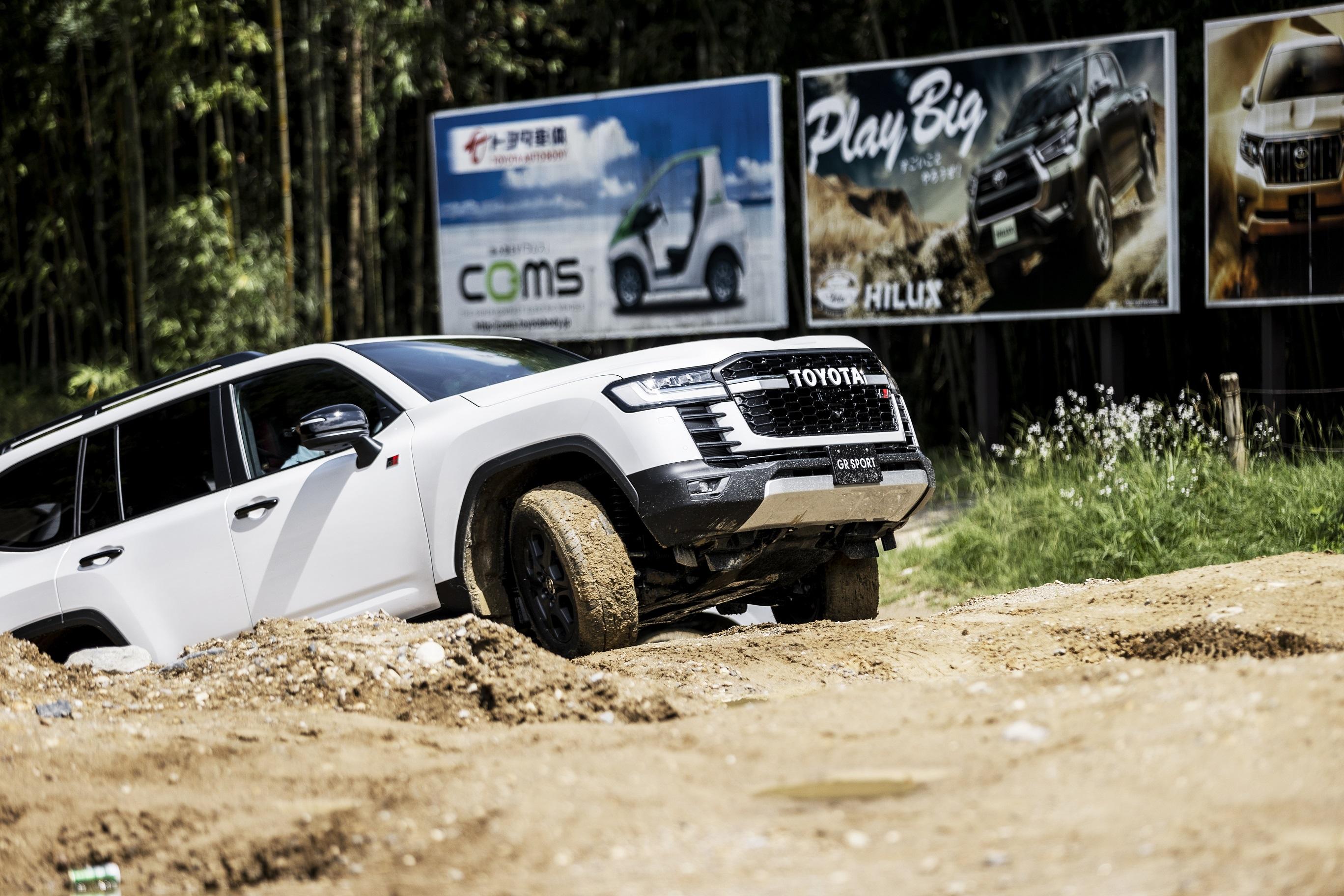
Osaka
While I haven’t driven in extreme conditions such as the Nürburgring with the Land Cruiser, I have worked with the development team to gain what information we can from the car, to enable us to dialogue with the car.
In past Land Cruisers, on-road movement had been toned down, which has its upsides, but also requires the driver to anticipate and control the car's behavior.
For the 300 Series, we used new actuator technology to lighten the steering, while the GR Sport features e-KDSS, an electronic control stabilizer that stops rolling on-road and lets the car really stretch its legs when off-road.
We also worked to ensure that the vehicle’s movements do not lag behind the driver's actions, and I believe this has resulted in a car that feels very natural to control.
Mutual respect connects everyone involved with the Land Cruiser
“Roads train people, and people make cars” is the development philosophy passed down through successive Land Cruiser development teams. Thanks to TOYOTA GAZOO Racing and other motorsports activities, that philosophy has since been adopted across all development areas at Toyota.
A key component is the presence of test drivers who push the cars until they break. Wakisaka got right to the point in his question for chief engineer Yokoo.
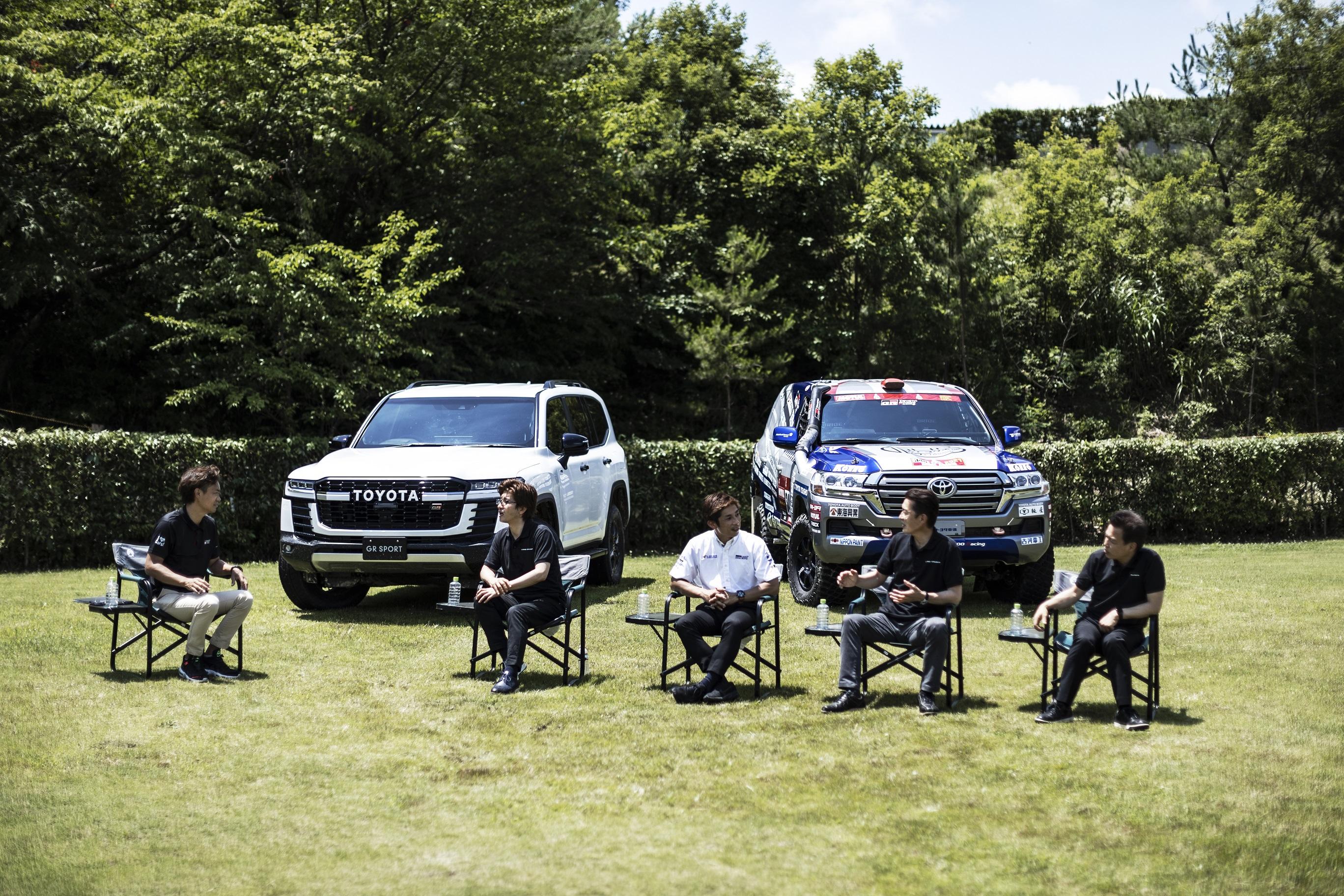
Wakisaka
In your position, how do you view test drivers like Osaka and Ueno?
Yokoo
I see them as teachers. I first met Osaka while designing the drivetrain for the Lexus RC F. When I asked him to test the system I had made, I was very impressed with his ideas about the behavior of the car and the car itself.
After that, I was approached by (Sadayoshi) Koyari, who is still chief engineer for the Land Cruiser Prado and 70 Series, and moved to the development team, where I met Ueno. As it turned out, I didn’t know anything about off-road driving. Things like not putting your fingers inside the steering wheel (to avoid being injured by the reaction force), or taking your foot off the brake when going downhill.
Ueno was the person who taught me that the Land Cruiser is a car that must tackle the harshest roads to sustain the lives of our customers.
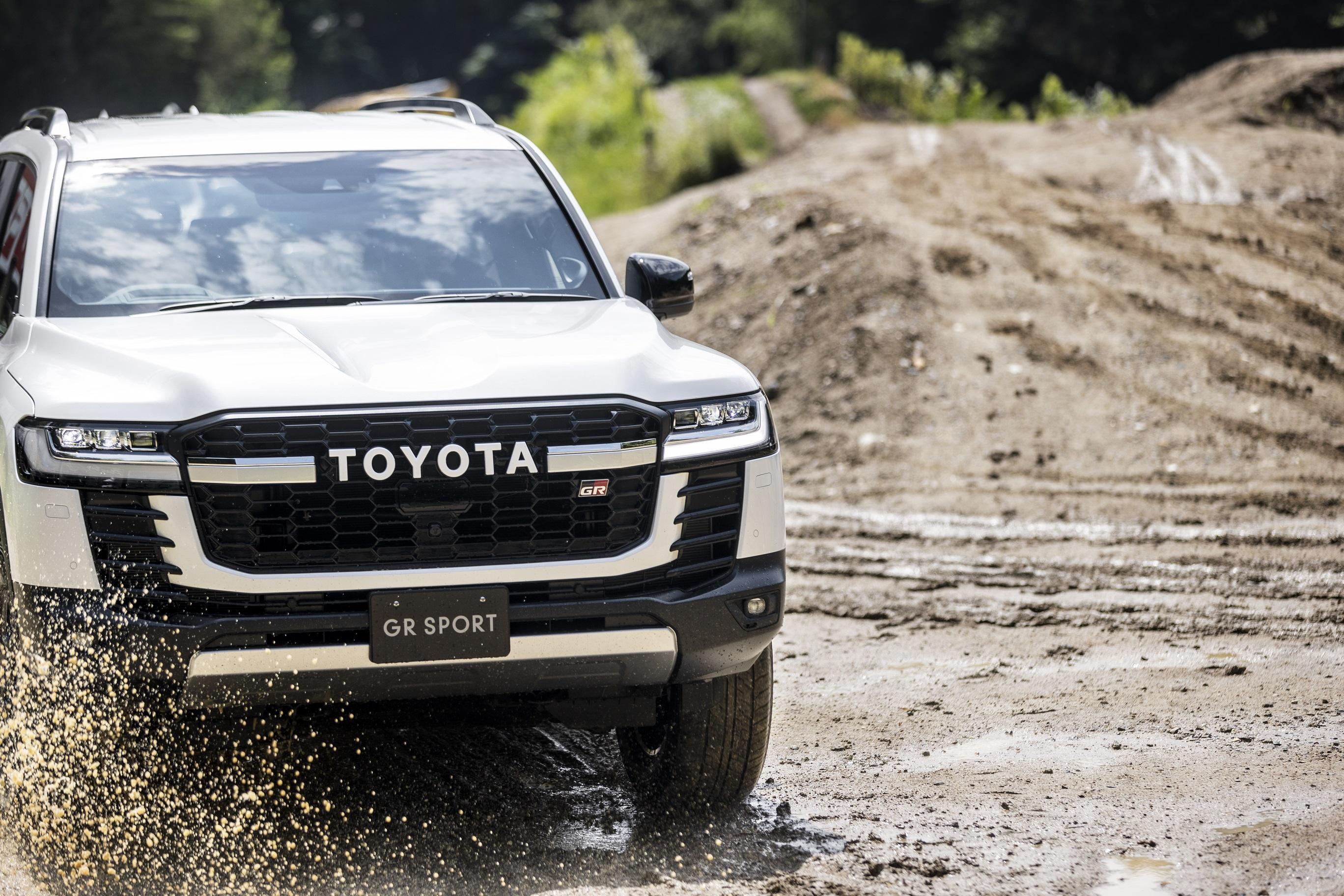
Successive models have embodied the Land Cruiser’s image as a “companion that can go where you want, when you want, and come back safely”. Wakisaka asked how this tradition has remained unbroken.
Ueno
These values have been inherited by each new generation of Land Cruiser because the words have been passed down by their developers. Yokoo, his predecessor Koyari, and all of the other chief engineers have shared their vision with the development team. In that sense, Land Cruiser development really feels like being part of one unified team.
Yokoo responded while smiling wryly at Ueno, the longest-serving Land Cruiser veteran of the four.

Yokoo
When I first moved into my current role, the general feeling was that people who didn’t know the Land Cruiser shouldn't be involved in product planning. In frame development, for example, we have people who are like walking encyclopedias.
Besides the individual parts, of course you also need to know how the frame fits into the car as a whole. I tried to adapt to the team while learning as much as I could from those around me.
But as Ueno says, everyone on the Land Cruiser development team has a really strong vision, so it’s rare for the overall vision to stray in the wrong direction.
The relationship between development managers and test drivers is not about whose word is higher in the chain of command. In an environment where the genchi genbutsu principle is thriving, the goal is clear to see.
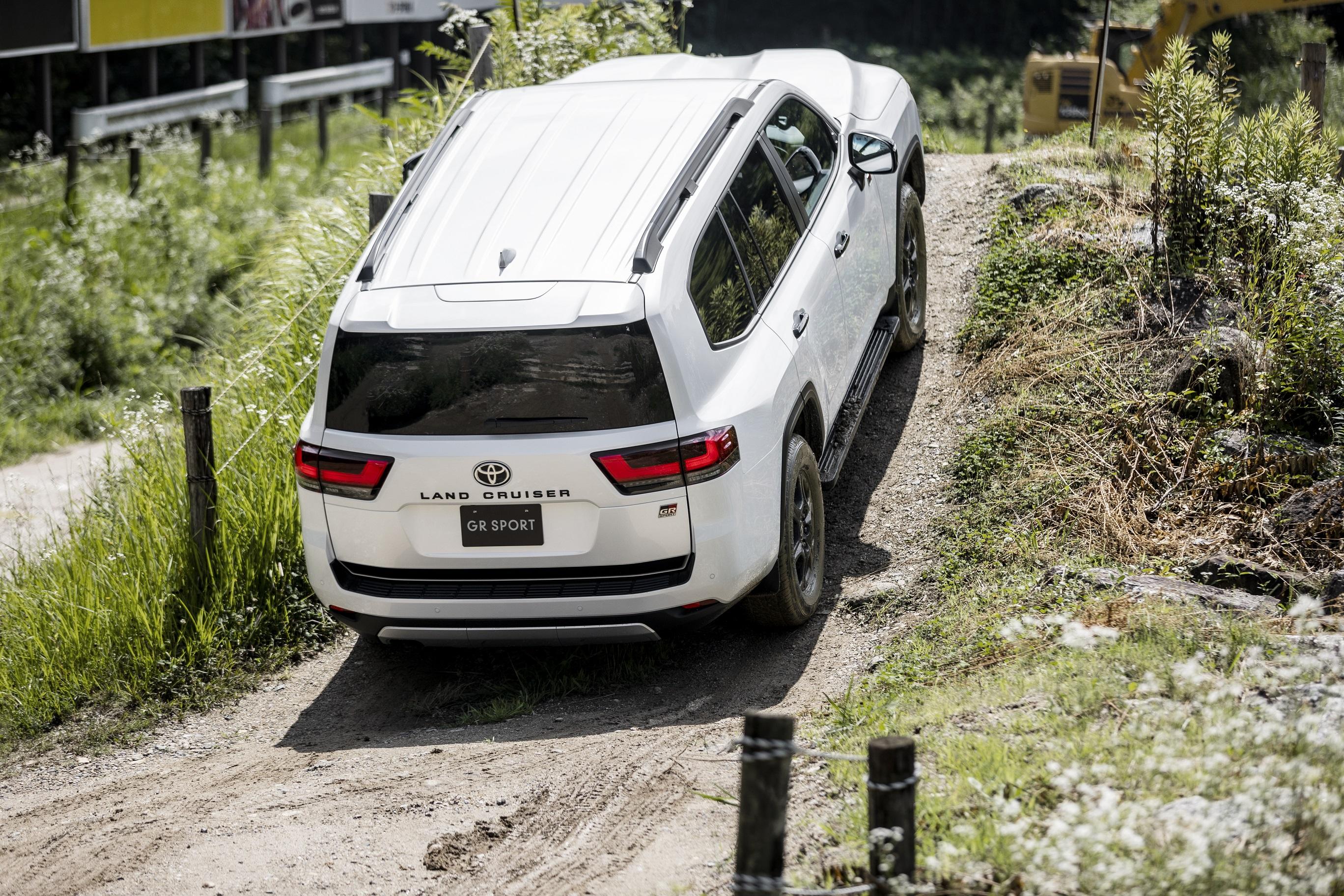
Wakisaka
The Toyota Standard is a quality standard that all Toyota vehicles must meet, but I heard that the Land Cruiser also has its own additional standards.
Ueno
Yes, there are Land Cruiser standards that are separate from the TS (Toyota Standard). Land Cruisers have always been honed by our customers around the world.
While we seek to develop the best possible car for each new model, we also receive a great deal of feedback from customers once it is in their hands. To further exceed their expectations, the Land Cruiser standards were developed on top of TS.
We ensure that our development meets those standards, in terms of durability and reliability. Even so, because our customers use the cars in such diverse ways, we remain constantly tuned in to their feedback.
Yokoo
Really, it stems from the need to protect the Land Cruiser’s value as a “companion that can go where you want, when you want, and come back safely", which has remained strong for 70 years. Each new model must outperform the previous in those three areas of reliability, durability, and drivability on rough terrain.
When developing the 200 Series, I challenged myself to make the front differential case aluminum. The goal was to reduce weight, but this sparked a big debate within the development team on whether we really should be using aluminum.
To answer that question, we spent some two years conducting tests to break the differential. If we saw a boulder, we would run the test car into it. We wanted something that could withstand such punishment. That’s what it took to get the job done.
The word “break” comes up frequently in Land Cruiser development. With a big smile, Wakisaka turned the conversation to Ueno.
Wakisaka
Do you enjoy being asked to break things?
Ueno
They don't have to tell me, I'll break it anyway. This approach has been taken up by each new generation of test drivers.
Environments that are completely unexpected in Japan may be normal elsewhere in the world. For the Land Cruiser, we try to account for such unexpected environments in our testing. I think Yokoo also wants to see us break everything.
In testing, we don’t hesitate to point out something that’s wrong. I think this system works because we share a mutual understanding in that respect.
Yokoo followed up those comments with a rather serious expression.
Yokoo
As you can imagine, with a full model change and weight reduction, we need to break the car to ensure that it is safe in collisions. In recent years, especially in motorsports with the GR Yaris, the development approach has focused on that cycle of breaking and fixing.
With the Land Cruiser, we have to break everything to move forward. I feel that both the Land Cruiser and the GR Yaris link back to the same place.

The Land Cruiser 300 Series has finally made its debut, but Wakisaka’s main interest remains in motorsports. How far away is the car from being thrown into the ultimate arena, the Dakar Rally?
Miura
The plan is to put it in the Dakar Rally in 2023. We have already started developing it as a rally car – right now, we are pulling the car apart, rebuilding the body and chassis to conform with the rules, and programming the engine for rally driving.
We might be ready for shakedown as early as this fall, and I’m sure it will show us something new that we haven’t seen in the 200 Series.
Even in motorsports, the Land Cruiser 300 Series will continue to open new horizons.

